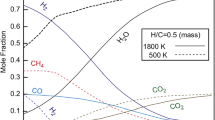
Overview
- Provides a comprehensive review in the field of exoplanets and the search for extraterrestrial life
- Offers more details than any other book on the market
- Guarantees a reading level suitable for both amateurs and researchers interested in the field
Access this book
Tax calculation will be finalised at checkout
Other ways to access
About this book
Are we alone in the universe? This ancient question remains unanswered, but we are inching closer to finding out. Since the 1970s, probes have explored various objects in our solar system, revealing no advanced civilizations beyond Earth. However, bacterial life likely existed on Mars and might still exist today. Venus, though a scorching hellscape, could host bacterial life in its atmosphere. Some moons of gas giants are believed to harbor underground oceans potentially capable of supporting life. The greatest hopes for discovering life lie in the myriad of exoplanets in our galaxy and beyond, the first of which was discovered in 1995. This discovery revolutionized our understanding, showing that planets are common, with each star often hosting one or more. This significantly increases the likelihood of both microscopic life and advanced civilizations. While not all planets are suitable for life, billions of habitable planets exist in our galaxy alone, some even classified as super-habitable, possessing conditions more favorable for life than Earth. Current and future space telescopes aim to study these planets' atmospheres, searching for life-producing molecules. One such molecule, produced exclusively by life, has already been detected on a discovered planet. Despite extensive searches, no signals from other civilizations have been found, but this doesn't rule out their existence. Recent studies based on star formation, the prevalence of planets, and the potential for life-supporting conditions suggest that technological civilizations have certainly existed in the Universe. The next decade will be crucial in answering the question: are we alone?
Similar content being viewed by others
Keywords
Table of contents (13 chapters)
-
Front Matter
-
Back Matter
Authors and Affiliations
About the author
Antonino Del Popolo graduated from the University of Bologna in 1990 with a grade of 110/110 cum laude, defending a thesis on General Relativity. He obtained his doctorate in 1994, defending a thesis on the cold dark matter model. He worked as a researcher at the CRL Institute (NICT) in Tokyo (1998-1999), Bosphorus University in Istanbul (2000-2005), the Feza Gursey Institute in Istanbul (2001-2003), and the Argelander Institute in Bonn (2008-2009). He was a Full Professor at Istanbul Technical University (ITU) from 2006 to 2008. Since 2008, he has been an adjunct professor at the Department of Physics and Astronomy at the University of Catania. He has been "visiting professor" in several Universities around the world, like the University of Sao Paulo (Brazil), the International Institute of Physics (IIP) of Natal (Brazil), the IMP-CAS of Lanzhou (China), where he also obtained the PIFI prize of the Chinese Academy of Sciences, the Astronomy of the Russian Academy of Sciences, the Sofia S. K. Ohridsky University and the Institute of Astronomy of the Academy of Sciences. Among his publications, apart the around 200 scientific papers, are The Invisible Universe: Dark Matter, Dark Energy, and the Origin and End of the Universe, World Scientific, which was translated and published in Russian and Italian, God or Science. Is Science Denying God?, World Scientific, translated and published in Italian, and The big ideas of science, World Scientific.
Accessibility Information
Bibliographic Information
Book Title: Extraterrestrial Life
Book Subtitle: We are not alone
Authors: Antonino Del Popolo
DOI: https://doi.org/10.1007/978-3-031-83497-4
Publisher: Springer Cham
eBook Packages: Physics and Astronomy, Physics and Astronomy (R0)
Copyright Information: The Editor(s) (if applicable) and The Author(s), under exclusive license to Springer Nature Switzerland AG 2025
Softcover ISBN: 978-3-031-83496-7Published: 06 March 2025
eBook ISBN: 978-3-031-83497-4Published: 05 March 2025
Edition Number: 1
Number of Pages: XII, 144
Number of Illustrations: 3 b/w illustrations, 22 illustrations in colour
Topics: Astrobiology, Astronomy, Astrophysics and Cosmology, History and Philosophical Foundations of Physics



